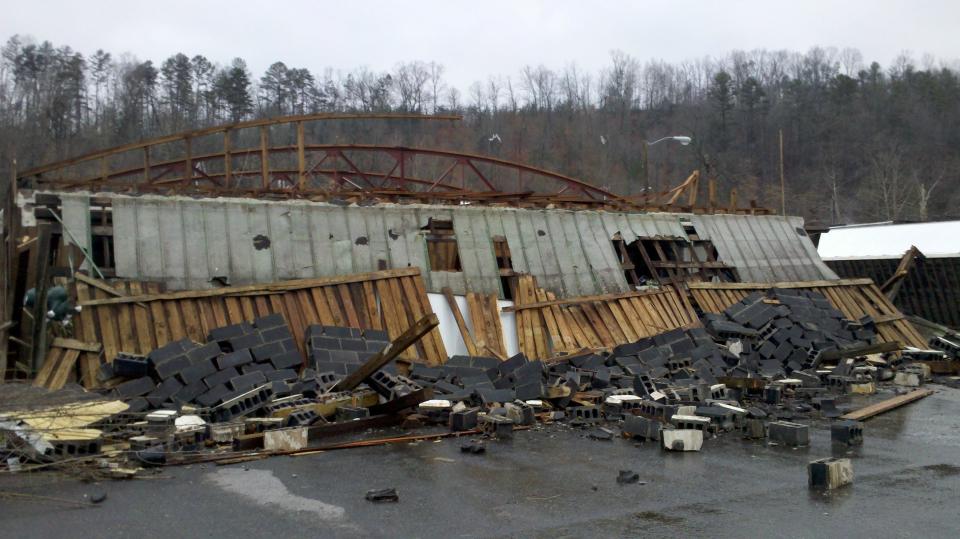Tornado Alley may be expanding; Here's why Southern states are at risk
The Southeast isn't part of "Tornado Alley," a part of the United States that has historically suffered the most regular tornadoes—or is it?
AccuWeather says that Tornado Alley has historically consisted of northern Texas northward through Oklahoma, Kansas, and Missouri and parts of Louisiana, Iowa, Nebraska and eastern Colorado. However, scientists say there have been some concerning changes in recent years.
The USA TODAY Network reported that tornadoes occur more often across the southern states than ever before. Here's what they found.
More: Tornado warning: Twisters are hitting more frequently and dealing more deaths in the South
Expansion of Tornado Alley into the southern states
The USA TODAY report said that 20 U.S. states saw increased tornado activity when comparing annual data from 1980 to 1999 with 2000 to 2019. However, scientists can’t know precisely how much of the increase in reports may be due to improved technology. Areas with increases include states outside historical “Tornado Alley,” such as Alabama, Kentucky and Mississippi.
When you compare the total number of people killed by tornadoes from 2000-2019 with the previous 20 years, many states in the Southeast saw significant increases. Alabama, Missouri, Tennessee and Kentucky had the most significant increases in deaths.
So far, scientists are not entirely sure why some states have seen an increase and others have seen a decrease. But they do know that many tornadoes form in storms of warm, moist air off the Gulf of Mexico — and that the warming of Gulf waters is rapidly accelerating due to climate change.
Region-specific risk factors also contribute to increased fatalities in southeastern states. People live closer together in the South than in the traditional area associated with Tornado Alley, meaning that more significant numbers of people can be in the path of a tornado.

"As you get east of the Mississippi, the population density increases,” said Victor Gensini, associate professor in the Department of Geographic and Atmospheric Science at Northern Illinois University. “Tornadoes are more likely to hit things."
Southeastern tornadoes might also be obscured by heavy rain, unlike many of the tornadoes in Tornado Alley. They are more likely to be hidden from view by the hilly terrain and trees of many states in the region.
“When most people hear a tornado warning, the first thing they do is confirm the threat," said Stephen Strader, an atmospheric scientist at Villanova University. "You've got a problem if there's a lot of trees. That makes it very difficult to confirm the threat."
Other factors that can contribute to higher numbers of deaths and casualties due to tornadoes in the South said Gensini and others, included:
Harder-to-see tornadoes wrapped in rain and not the photogenic funnels many people would envision.
An expanding population.
More mobile homes and more aging mobile homes.
More nighttime tornadoes.
More: AccuWeather predicts 'explosive' 2024 hurricane season; North Carolina coast at risk
Which states are in Tornado Alley?
While there is no official designation, the area known as Tornado Alley is generally designated as between Texas and South Dakota. AccuWeather identified the area as northern Texas northward through Oklahoma, Kansas, and Missouri and parts of Louisiana, Iowa, Nebraska and eastern Colorado.
Why is the Tornado Alley called the Tornado Alley?
AccuWeather said that Tornado Alley earned its name due to the "unique combination of geographic and meteorological factors that make it more susceptible to tornadoes."
Though it only covers 15% of the U.S., 30% percent of all confirmed tornadoes have happened in Tornado Alley since 1950.
More: Summer forecast predicts hot weather across the United States
More: Potential for severe weather, tornadoes continues to grow
Which state gets the most tornadoes?
The Weather Channel said that the two most active states for tornadoes are Texas, with 124, and Kansas, with 87 in an average year. Both states are located in Tornado Alley.
How often do tornadoes occur in Tornado Alley?
According to the Weather Channel, the three-month period in which the most tornadoes on average occur in Tornado Alley begins in April.
The website said that May typically has the most tornadoes yearly, averaging 278. This is followed by June and April, which average 188 and 203 per year, respectively.
Dinah Voyles Pulver, Mitchell Thorson, Ramon Padilla, Stephen J. Beard, Doyle Rice and Shawn J. Sullivan, USA TODAY Network, contributed to this report.
Iris Seaton is the trending news reporter for the Asheville Citizen Times, part of the USA TODAY Network. Reach her at [email protected].
This article originally appeared on Asheville Citizen Times: Which states are in Tornado Alley? Why is it called Tornado Alley?
